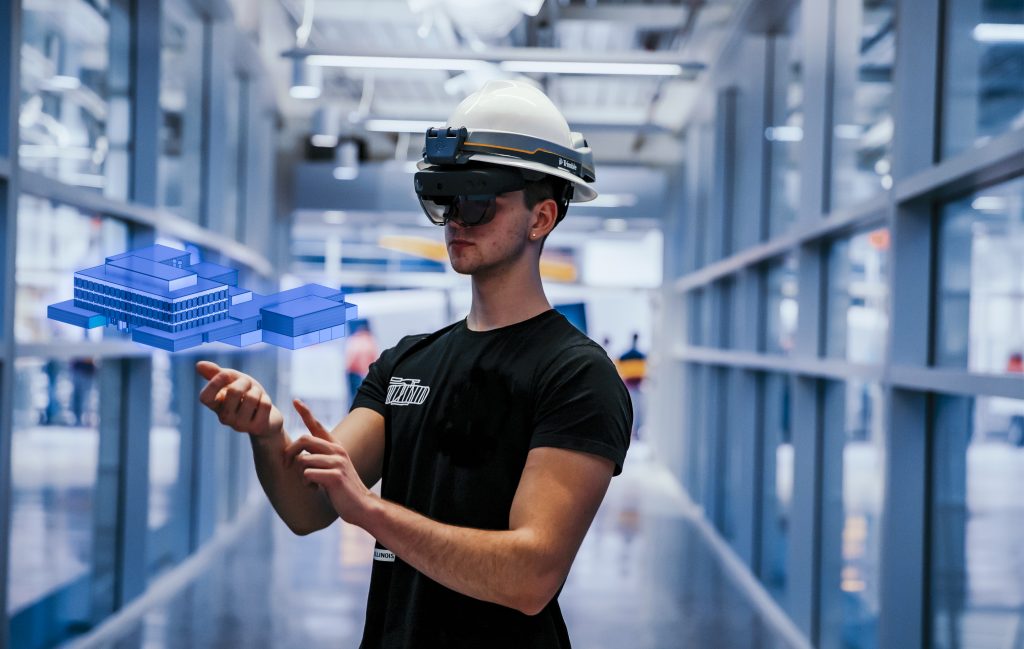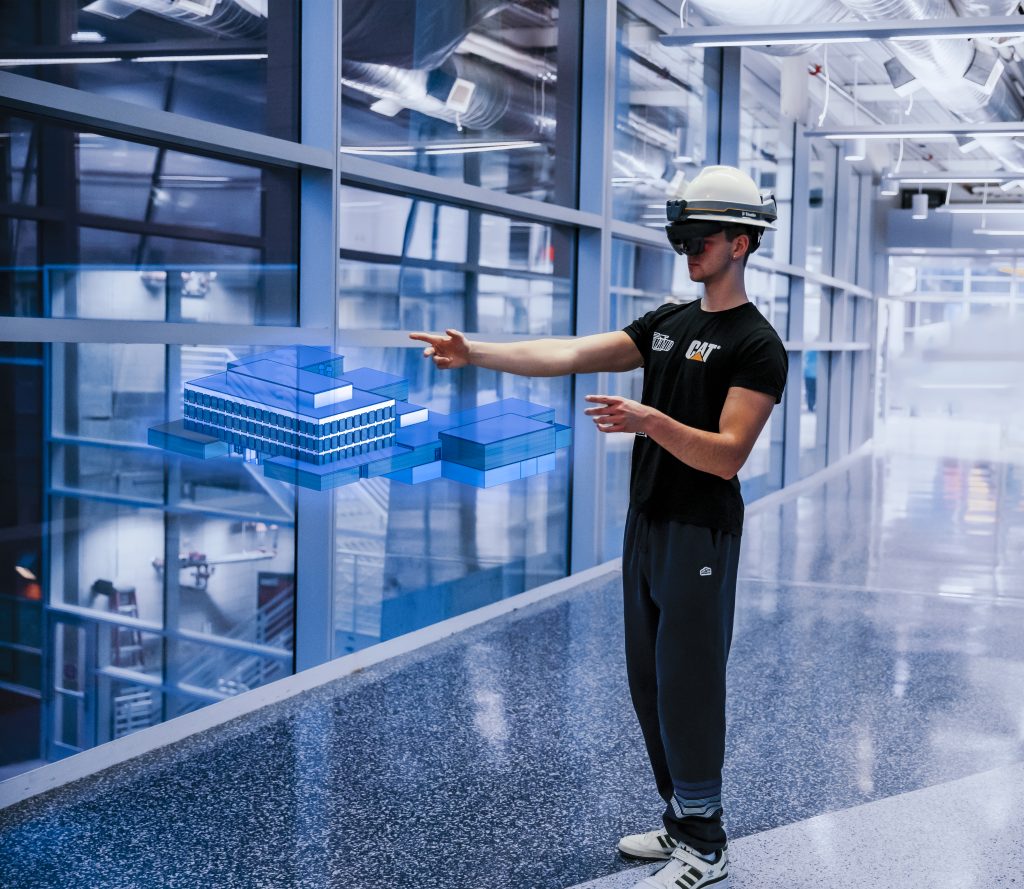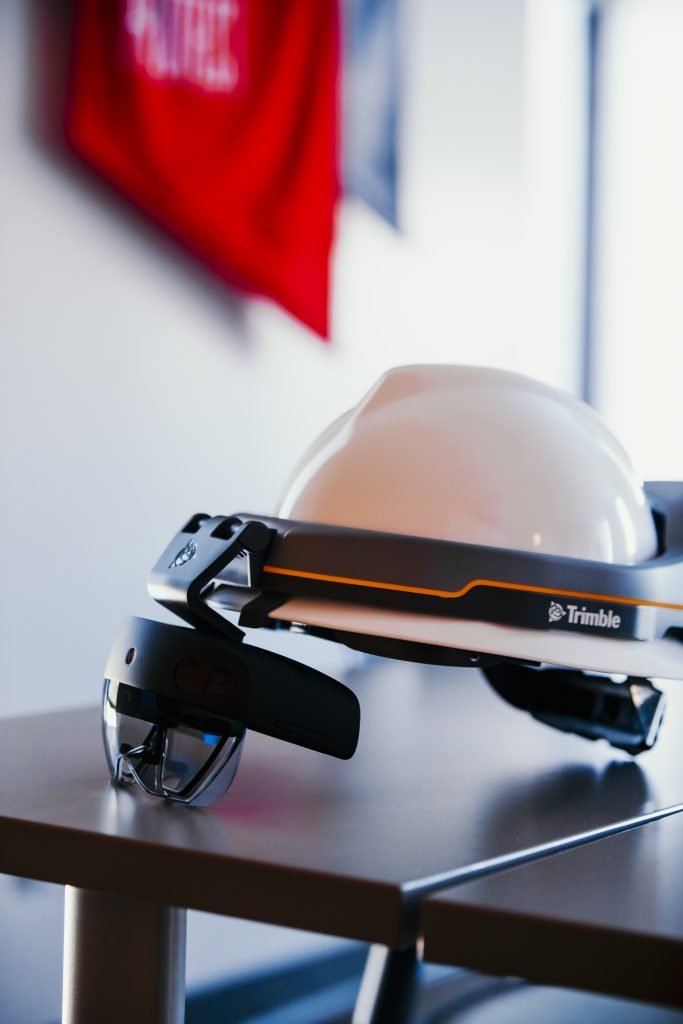Holographic hard hats ahead: Cyclone Engineers break into the third dimension of structural design
Author: Sarah Hays
Author: Sarah Hays

“We aren’t in the civil engineering world as we know it anymore,” Liam Lenahan, sophomore in civil engineering, said. “Technology is advancing so rapidly, and we need to keep up with this new, 3D world.”
Most days are comprised of 3D experiences: walking outside, eating food, driving to work. But while so much of our time is spent in the third dimension, a lot of research is still done in 2D.
That’s why Lenahan and assistant professor Roy Sturgill are working together to bring the third dimension into structural design. The two are bringing 3D projects into the classroom through a very ‘construction-style’ medium: hard hats.
In the Spring of 2022, Lenahan joined the Department of Civil, Construction and Environmental Engineering’s Undergraduate Research Program – a program in the department dedicated to funding research for undergraduate students, and giving them the opportunity to explore more of their passions earlier in their careers. Lenahan was matched with Sturgill when he applied to the program, and from there, Lenahan’s project began.

Sturgill and Lenahan’s project currently consists of six hard hats, that aren’t just for the purpose of protection. Each Trimble hard hat is outfitted with a HoloLens. When wearing the hat, anyone can see project designs, blueprints and almost anything in 3D. Lenahan is researching how to have the best effectiveness of the hats, how to operate them and how they can best be used for education in the classroom.
After months of trial and error and with guidance from Sturgill, Lenahan has brought the hard hat to life, and can now upload almost anything to the software and view it through the hat. Lenahan and Sturgill prepared the six hats for classes in CCEE to help advance education and experience in the department.
“Right now, we teach everything in 2D,” Sturgill said. “Even though it is on a computer screen, we are still very much living in a paper world in how we teach our classes. But in construction, the industry is moving into this 3D environment, so we need to start getting our students prepared to see that in the field.”


Lenahan’s work in the third dimension is just the beginning, he says. With projects like this, buildings can be built fast, costs can go down, and users have the flexibility to see every inch of every corner of their 3D model.
“I just truly believe in this research and the outcome of this,” Lenahan said. “It’s amazing what this stuff can do, and I am learning so much. This is an amazing research opportunity with new technology.”
Sturgill received funding for this research through his fellowship as a Miller Faculty Fellow – a fellowship given to faculty passionate about enhancing education. Sturgill and other faculty in the department will work together to use the hard hats in class throughout the program.